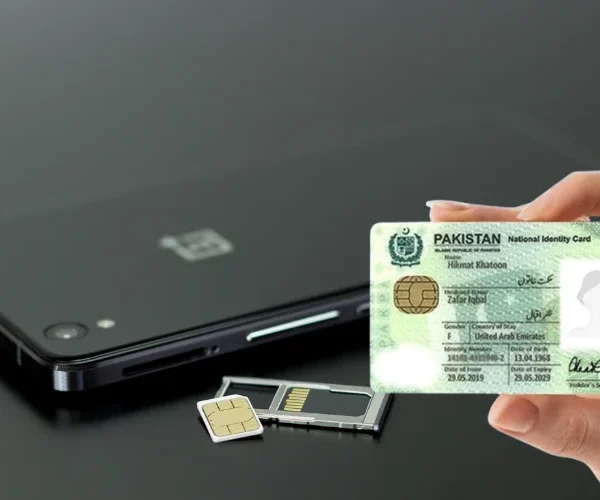1. Leverage Social Media Platforms to Their Fullest Potential
Digital branding via social media is one of the most accessible and affordable ways you can take your brand presence to the next level. Free access to millions will enable you to spread brand awareness on platforms such as Instagram, Facebook, LinkedIn and Twitter.
To maximize the impact of social media:
- Choose Platforms Wisely: It’s not possible that every brand needs every platform. For instance, if you are anything to do with fashion or food you will likely find Instagram a more beneficial place to gain business, should your business be B2B then LinkedIn is likely more suited.
- Stay Consistent with Posting: Sharing content often, that’s relevant to your target audience keep your brand in front of their minds.
- Engage and Interact: Also you can reply to comments, host live sessions and use interactive content like polls, quizzes etc. When you build a community around your brand, it encourages followers to share your content and any increase in sharing leads to organic reach.

2. Optimize Your Website for Search Engines (SEO)
Making your brand visible to potential customers who search online, however, depends on SEO (Search Engine Optimization). Basic SEO strategies can be implemented by anyone, no expert required.
Here’s how to get started with SEO on a budget:
- Identify Keywords: Use tool like Google Keyword Planner or Ubersuggest to search out relevant keywords. Try to use a long tail keywords, as they tend to be less compete and more specific.
- Optimize Page Titles and Descriptions: Using keywords naturally in your website’s title tags and meta descriptions will help boost your chances of appearing on search results.
- Create High-Quality Content: Ultimately the success of SEO is founded upon valuable content. Write blog posts, how-to guides, and product insights that solve your audience’s problems and you’ll move up the rankings.
3. Utilize Free and Low-Cost Design Tools for Branding
Digital identity is also an important part of visual digital branding, and you don’t need to spend a lot on costly software to create appealing visuals.
Consider these tools for cost-effective design:
- Canva: With zero experience on the designing front, Canva allows you to create amazing visuals with thousands of templates for social media posts, presentations and much more.
- Unsplash and Pexels: These are platforms of royalty free images with high quality that you can use on your content.
- PicMonkey and Fotor: Both come with photo editing features for enhancing your brand images without Photoshop.
It’s easy to use these tools to build a consistent and visually appealing digital branding without having to hire a designer
4. Establish a Consistent Brand Voice and Messaging
The more consistent you are, the more trust you’ll build with your audience or fans. A strong brand voice in digital branding clearly, reliably, and accessibly is what will strengthen your online presence.
To develop a brand voice:
- Define Your Audience: Choose a tone that matches with the preferences of your ideal customer and ensure you are marketing your brand to the right people. For example this tone might appeal to a younger audience more than a formal, written tone for example.
- Choose Key Messaging Themes: Choose a number of themes that fit in with your values brand. Let’s say you’re a sustainable company, in that case your brand messaging theme could be about “eco-friendly” or “ethical practices.”
- Keep Tone Consistent Across Channels: Maintain a cohesive brand voice whether it’s blog posts, social media, email marketing… etc. Consistency with your brand helps your audience recognize and recognize your brand too.

5. Take Advantage of User-Generated Content (UGC)
Without breaking the bank, you can use user generated content to build authenticity and engagement.
Here’s how to use UGC effectively:
- Encourage Customer Reviews: Potential customers highly trust reviews and are influenced by them. Get you happy customers to review your business on Google, Yelp or your social media profiles.
- Feature Customer Stories: Sharing testimonials from real customers or stories of real people (or use their real names) that you work with will add a layer of trust and show real world result.
- Run a Hashtag Campaign: Make a custom hashtag for your brand and ask users to use it when they write about your products or services. This is not just going to increase your brand visibility but it’s also going to give you the user generated content that you can share on your channels.
6. Collaborate with Micro-Influencers
Using influencer marketing for digital branding doesn’t have to entail hiring some well-known celebrity with millions of followers. For example, micro-influencers – who have an achieved smaller audience but are highly engaged – are usually cheaper and even more useful.
To get started:
- Identify Relevant Micro-Influencers: Seek out influencers within your industry or niche who have an audience who’s demographics overlap well with your target market. If you’re looking for possible collaborators, platforms like Instagram, TikTok and even LinkedIn are excellent.
- Offer Product for Review: Since these micro influencers are happy to review products in exchange for samples themselves, it can be an effective, low cost way of increasing exposure to your brand.
- Build Genuine Relationships: Never seek one off collaborations, look instead for influencers you can build long term relationships with. Collaboration is continuous and will help build brand credibility and trust.
7. Embrace Content Marketing through Blogging
Blogging is just one cheap and versatile way to make yourself the voice of your industry in digital branding. You can build credibility by sharing valuable insights from time to time, tips, and things about your business that potential customers should know.
For an effective blogging strategy:
- Focus on Topics Your Audience Cares About: Research what pain points your audience is going through, and what they are interested in. Ease their pain, answer their questions, and solve their problems and it will attract more readers.
- Optimize Blog Posts for SEO: Be sure to use relevant keywords, include headings, bullet points and internal links that will make your content both readable and search engine friendly.
- Repurpose Blog Content: Use your blog posts to make snippets, for social media posts, or for a newsletter. Repurposing content helps stretch out the content’s lifespan and ensure each piece of content you produce is effective for as long as possible.

FAQs
- What are some essential tools for digital branding on a budget?
For brand visual options, Canva, Unsplash, are fantastic, while free social media management tools such as Buffer help plan content on the cheap. - How can I build a consistent brand voice?
A consistent brand voice is better created by defining your audience, settling on the key messaging themes, and ensuring to use the same tone across all channels. - Is social media necessary for digital branding?
One of the most affordable and effect tools for digital branding is social media. The best part is that it enables you to be in direct touch with the audience. - What is user-generated content, and why is it important?
Reviews, testimonials, and customer stories fall into the category of user generated content. It helps you add authenticity to your brand and generate trust in the potential customers. - How can micro-influencers help with branding?
Smaller engaged audiences are what micro-influencers have, and they are more affordable than the big influencers. Authentically, they can help to reach a niche audience. - Why is SEO important for digital branding?
This in turn improves visibility on the web, for potential customers who are already looking for these services or products.
Conclusion: Building a Brand on a Budget
While building a digital brand can be difficult when you are on a budget, with the right approach you can not only succeed, you can also succeed with excellent results. With the affordable tools you can find online and smart use of your content and social media, you can compose a cohesive, resonating brand with lesser spending. If you put these seven tips into play, you will establish a digital presence that appeals, and one that your audience can’t help but notice and remember.







